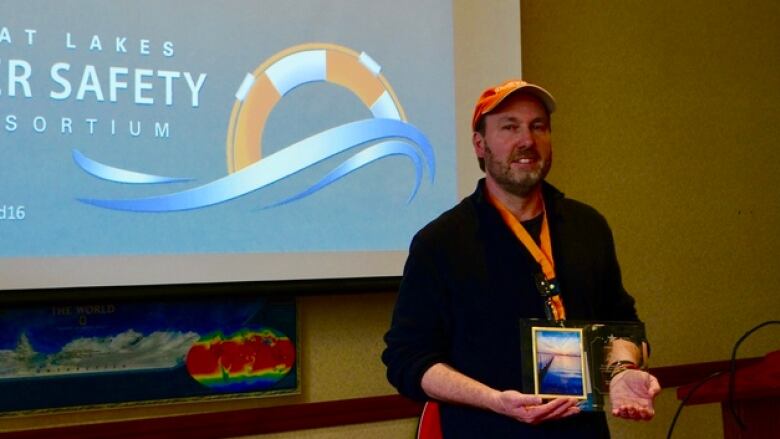2016 spike in Great Lakes drownings linked to warm weather
Safety advocates are attributing a high number of drownings in 2016 to warm weather and high water levels

Water safety advocates around the Great Lakes are hoping the upcoming summer won't follow a trend set last year.
2016 was a particularly deadly year on Great Lakes, said Jamie Racklyeft, the executive director of the Michigan-based Great Lakes Water Safety Consortium.
"We saw a definite spike," said Racklyeft, citing data collected by The Great Lakes Surf Rescue Project, which tracks drownings based on media reports from both Canada and the U.S.
"A 78 per cent spike in drownings on the Great Lakes from 2015 to 2016."
The jump from 55 recorded drownings on the Great Lakes in 2015, to 98 in 2016 is being attributed to warm weather, and high water levels, he said.
"So the air temperature was warmer, which drew more people to the beaches. The water was warmer, which drew more people from the beaches and into the water. And water levels were higher, so the wave energy was closer to shore where the people were."
Saved 'at the last second'
Racklyeftknows all too well how dangerousthe Great Lakescan be. It was a close call in 2012 that inspired him to start the Great Lakes Water Safety Consortium.
He was swimming in Lake Michigan on a wavy day, when he felt himself overpowered by a current pulling him away from shore. He nearly drowned, he said.
"Fortunately two brave strangers in a kayak saved me at the last second."
Strong currents pose dangers
The majority of Great Lakes rescues and fatalities occur when waves are high, said Megan Dodson, a meteorologist with the National Weather Service in Northern Indiana, and manyare also linked to strong currents.
But currents on the Great Lakes are still not well understood, she said, adding that when researchers first started taking note of them, it was an uphill battle to convince some people that powerful rip currents could even occur on the lakes.
"That was actually a big thing we had to fight against," she said.
'They think of it as an ocean thing'
"Most people don't know about [rip currents] on the Great Lakes," said Racklyeft, "they think of it as an ocean thing."
Over the past few years, there's been a heightened effort to educate people about the danger of currents especially near structures such as piers and breakwalls and to teach people what to do if they are in trouble, said Dodson.
Dodson, who tracks Great Lakesdrowningsand rescues that are specifically related to currents, said she also noted an upswing in incidents in 2016 dueto warm weather that drew people to the water.
For Racklyeft, the spike in drowningslast year indicates a need for even more education, on both sides of the border.
"All of these [deaths] are preventable, that's the frustrating thing," he said.












_(720p).jpg)


 OFFICIAL HD MUSIC VIDEO.jpg)
.jpg)



























































































